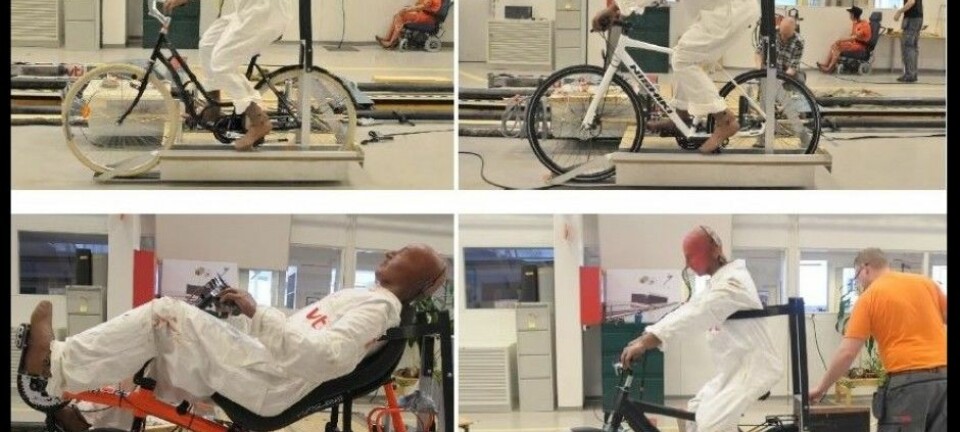
Is e-cycling good exercise?
Using an e-bike instead of a car is obviously a contribution to a better environment and less climate change. But do e-bikes also promote health or do their electric motors make everything too easy?
Elling Tufte Bere and three other researchers at the University of Agder in Kristiansand, Norway, have compared e-cycling with normal biking with a focus on time spent and exercise intensity.
“Everybody knows that cycling is a great physical activity but we wondered what exercise a person gets on an e-bike, as these have become so popular. Could they be too easy? This is what we wanted to find out,” says Elling Bere, a professor at the Faculty of Public Health, Sport and Nutrition at the University of Agder.
Bere was surprised by the results. E-cycling proved to give more exercise than he expected.
Measured oxygen intake
Six men and two women participated in the experiment. They were all required to cycle two trips twice each, two on conventional bikes and two on e-bikes – resulting in 32 journeys. One of the routes was on flat terrain and the other was hilly. Both were meant to represent typical commutes to work.
Oxygen consumption was gauged continually as they cycled as a measurement of activity. In addition tests were made of the participants’ maximum cardiorespiratory fitness and their resting metabolic rates.
“The participants wore a portable oxygen analyser linked to a GPS while they rode. The measurements were carefully and reliably conducted,” says Bere.
The researchers wanted to see where on the routes the riders were moderately and intensively physically active.
“Health officials recommend moderate or intensive activity at least 150 minutes per week. Moderate activity is defined as three times a person’s resting metabolic rate, in other words three times as much as when we are lying still.”
Every one of the participants was engaged in well over moderate activity most of the time. On average the cyclists on e-bikes were 8.5 times as active as when resting, as opposed to 10.9 times as active when using conventional bicycles.
This was a smaller difference in oxygen consumption than the researchers anticipated. The e-bike riders utilised an average of 51 percent of their lung capacity. On conventional bikes they
used 58 percent on average.
Good physical activity
“The conclusion is that e-cycling is a good form of physical activity and I think many will be surprised to hear it. At least I was. I expected a much greater difference between conventional and electricity assisted bicycling,” says Bere.
All the participants were in moderate or intensive physical activity 95 percent of the time, according to the measurements. So, research backs up the benefits of e-cycling.
The participants spent more time in intensive activity when riding regular bikes because they used more time covering the distance and of course because it is harder to pedal on one’s own.
The e-bike was set in a mode to give maximum motor assistance. Elling Bere adds that it is also possible to avoid reaching a moderate activity level on such bikes if one pedals very slowly.
“In our test we instructed the participants thoroughly to cycle as much as possible like they would if they were biking to work.”
The researchers add that a drawback with the study is that the participants knew they were engaged in an experiment and this could have skewed the results. They might have unconsciously cycled with a higher intensity than they normally would.
Nevertheless, the test result is in line with international research. Some related studies can be read here and here.
Keep your bike but stop driving
E-bikes can be great alternatives for those who think biking is too slow and takes too much time. The test showed that electric assisted bikes saved time, especially on the hilly route.
Here it was 29 percent faster than the conventional bike.
“What we see is that e-bike ‘flattens out’ the hills.”
Bere stresses that even though the e-bikes provide physical activity, normal bikes are even better in this regard.
“Switching from conventional bikes to e-bikes is not beneficial. But if more people stop driving cars and start using e-bikes to their jobs it would have a positive effect on public health.”
He says that e-bikes can be a fine alternative for those who cannot or will not use a conventional bicycle.
“These are good for instance for older people or those who have longer commutes to their jobs.”
-------------------------------------
Read the Norwegian version of this article at forskning.no
Translated by: Glenn Ostling

































